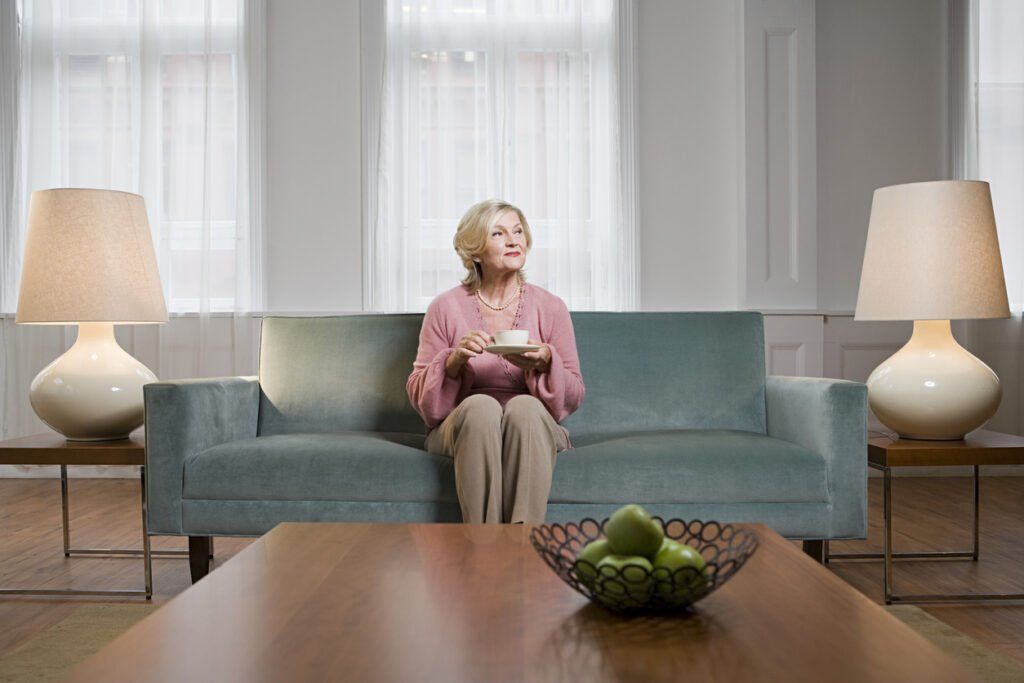Helpful Dementia Room Signs and Décor for Dementia Patients
Everyday life can be challenging for a loved one with dementia. But with simple adaptations at home like dementia room signs, life could be easier, less stressful, and more pleasant.
Dementia slowly robs one of the cognitive abilities, which results in difficulties handling daily activities, participating in social life, pursuing meaningful activities, and most of all increased anxiety. Making everyday tasks around the house easier helps them stay independent and reduces stress, anxiety, and frustration. So, how can you achieve that?
Below are a few simple changes you can make at home to make it safe and friendly for a loved one living with dementia.
Add Natural Lighting
Good and ample lighting is a crucial element in a dementia patient’s space. Whenever possible, ensure to increase natural light inside the house by opening curtains, trimming large hedges outside that block the sunlight or windows, and removing any unnecessary blinds and nets.
When using artificial lighting, make sure to block any shadows caused by poor lighting. This is because shadows can easily scare the person with dementia and cause them to “see” something that is not there. Also, close drapes during the night to avoid reflections on the window and to indicate it is nighttime.
Additionally, cover or remove all mirrors in the room, as people with dementia can be frightened or anxious when they see their reflection in a mirror. This is because as dementia advances, memory deteriorates, and the person may no longer recognize themselves when they see their reflection in it.
Use Contrasting Colors, but Minimize the Patterns
Older adults struggling with dementia navigate well in areas decorated with surfaces featuring contrasting colors. Choose furniture and fixtures with distinct colors, hang towels in the bathroom that vary in color from the bathroom wall color, and use bed linens and drapes that contrast in color with the walls and floors. They easily see useful objects with contrasting colors too, for example, a red plate on a white placement.
However, avoid using too many patterns in décor because they can have the opposite effect, which can create visual confusion and make things harder to see.

Dementia Room Signs and Salient Cues
Putting dementia room signs can be life-changing for someone with dementia. Keep your mind open and consider the following points:
- Use clear and easily recognizable pictures . A sign explaining that a particular door leads to the toilet or kitchen is useful, but it is even more useful when an image of the item or room associated with the word is included. For instance, a sign for the bathroom could have an image of a shower, while a sock drawer label could include a picture of socks.
- Create a color contrast . Make sure that the sign you are putting up stands out from its background. For example, if you are sticking the sign on a dark-colored background, make sure it is easy to see by making it a contrasting color.
- Give direction . If the kitchen, bathroom, laundry room, or toilet is on the other side of the house from where your loved one spends most of their time, help them find their way in one easy step. Set up signs that have an arrow or a finger showing them the direction they need to take. You can also put up simple one-word signs, for example, FOOD, BATHROOM, or KITCHEN, with an arrow pointing the way to those rooms.
Another way to make movement easier for a person with dementia is to enhance the room with salient cues. Salient cues grab a person’s attention and make them stand out from the surroundings. For example, a large, brightly illuminated statue or beautiful paintwork that makes the surroundings more familiar and pleasing.
Choose Safer Flooring
Avoid mats or rugs on the floor. A person with dementia may become confused and think the mat or rug is an object they need to step over, which could lead to falls or trips. Try to avoid shiny flooring, as this may be perceived as wet and your loved one may struggle to walk over it. Floor colors should also not mimic real objects, for example, blue and green, which may be mistaken for water and grass, respectively.
In addition, invest in glass or glazed-front cabinetry that allows a person to quickly recognize what is inside.
These are just a few helpful dementia room signs and décor tips you can use to enhance the space for your loved one. Each of them can contribute to their independence, improved safety, and improved quality of life.
Caring for a person with dementia is not easy and may require a lot of your attention, which can be a bit challenging. But you don’t have to worry because, at Thoughtful Care, we can help educate you about dementia and give you insights on how to cope with the challenges. Contact us today for more tips, questions, or services.
REQUEST FREE
IN HOME ASSESSMENT

